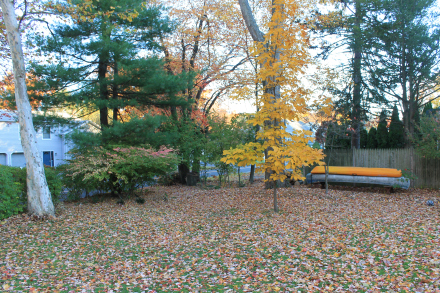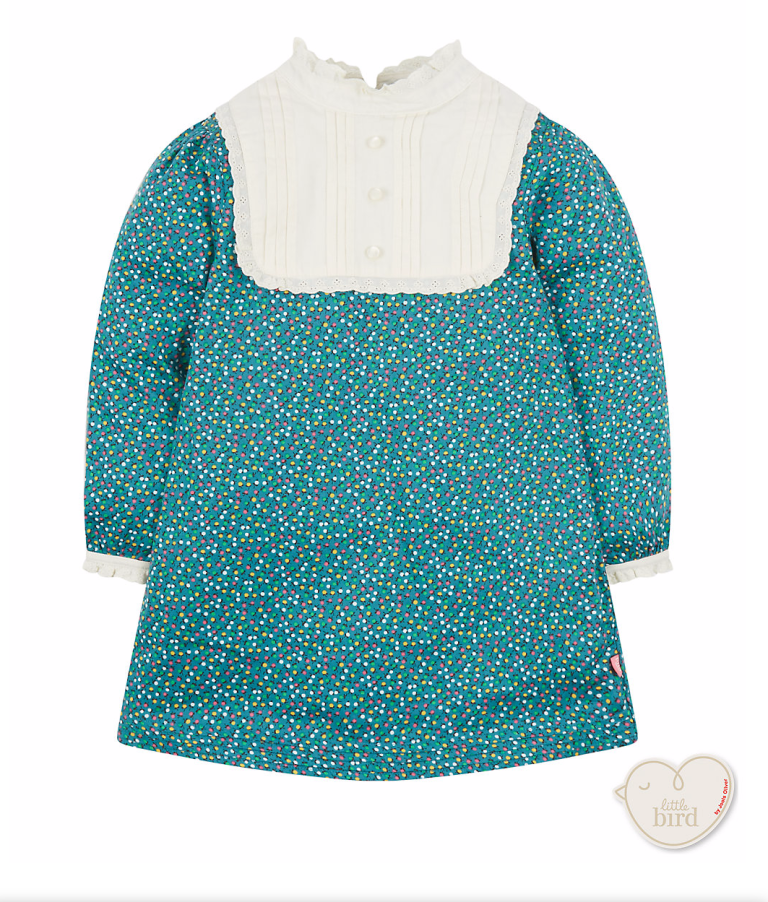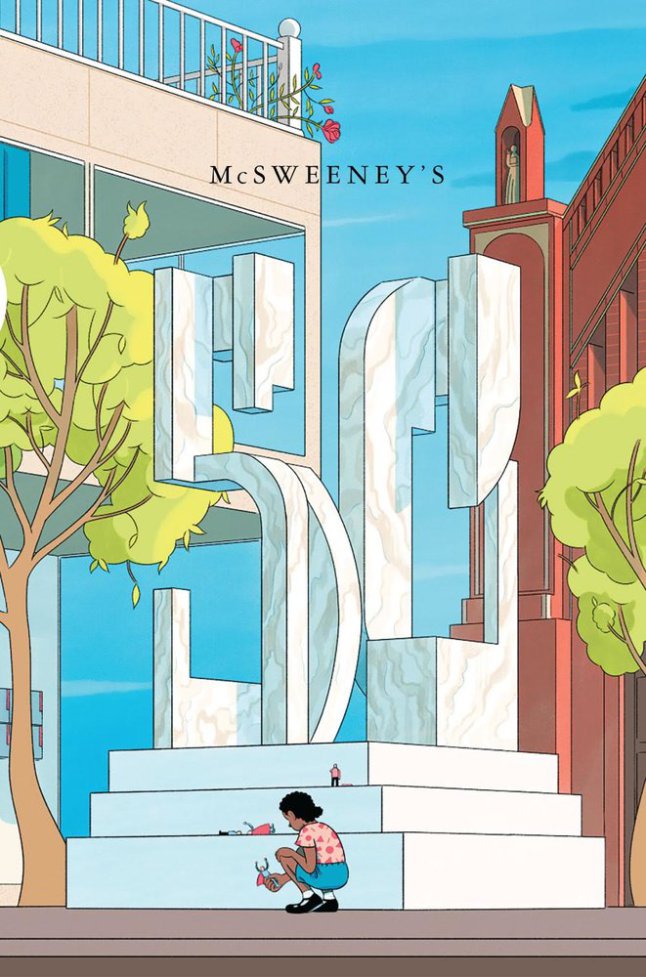It’s the last day of October, All Hallow’s Eve.
I read on Wikipedia that “it is widely believed that many Halloween traditions originated from Celtic harvest festivals …. it’s the time in the liturgical year dedicated to remembering the dead, including saints (hallows), martyrs, and all the faithful departed.”
My pile is all about celebrating the faithful departed, the martyrs, hallowed saints, at least those of the vegetative kingdom that I lord over. Some Christians historically abstained from meat on the feast of All Hallows’ Eve, a practice my pile faithfully honors; others to this day still light candles on the graves of the dead.
All in all, it’s a most fitting day to devote to the first big cleanup of the yard and in turn to bury the hallowed remains of the day and the season. Tricks and treats for the grave that is my pile.
I step outside on a pleasant, sunny fall morning to hear the neighborhood abuzz with the sound of unseen small engines, blowing, mulching and otherwise engaged in the collection of fall leaves. Halloween has become a big holiday, held at a fine time of year and a rare modern tradition that still involves welcoming friends and neighbors, not to mention goblins and ghosts, to your home. Aside from stringing up Christmas lights or preparing for a Fourth of July barbecue, it’s the one time of year when you want your property looking its best. It’s also the last day of Daylight Savings time, and I’m already burning daylight.
Homeowners have different strategies for coping with the seasonal blitzkrieg of leaves. Some spring into action as the first leaf hits the ground, fastidiously sweeping their yards clean of any and all debris, and making it a daily habit. Others wait until the final leaf drops before beginning on any cleanup. (And some homeowners, or their renters, never get around to do any seasonal upkeep at all to their yards or gutters or streetscapes…)

While the young hickory in the backyard clings to its shock of bright yellow leaves, enough leaves have fallen on the yard to begin fall cleanup in earnest.
I take the middle ground and time my yardwork based on my weekly schedule, the work at hand, and the weather – and for special occasions like the hordes of costumed youngsters that by dusk will be clamoring up to my back porch to plunge their tiny hands into a bowl of wrapped candies, while their parents idle along the street and make the kids’ trick or treating a rolling block party.
I have enough house pride to want my driveway and corner property to be safe and sound for the trick-or-treaters and presentable for the pub-crawling grown-ups promenading by. Some I recognize from the gatherings at the front-yard corner each morning, which serves as the neighborhood bus stop. I have appearances to keep up, after all.
Besides, my pile has been waiting all season for this moment, the day when I raise it from the ground with the first wholesale contribution from the landscape it nurtures, not just with a batch of freshly fallen leaves, but some special treats as well.
Despite a dousing of rain mid-week, most of the leaves of the trees in my yard remain stubbornly airborne. But enough have fallen gently upon the ground to make a day spent cleaning up a worthwhile yet manageable task.
In short, today marks the peak of leaf-peeping season here in southern New England. If you have any time or inclination to be a backyard gardener who also composts, today is a hallowed day. I can’t wait to get started.

Shredded paper and a helping of salt marsh grass harvested from the seashore will keep my pile airy under the coming crush of fall leaves.
First I set out my ad hoc compostibles: Two more barrels of salt-marsh grass gathered from the local beach, two half-filled bins of scraps from my kitchen and the neighbors next door, and more shredded paper from the office.
Do I spoil my pile with such lavishings? Perhaps, but all these treats are part of the waste stream that I produce at home, or bring home like a big bag of candy after a jaunt to the nearby seashore or farm.
The big treat for my pile today is the lidded metal garbage can that I first began filling in September with layers of shredded paper, kitchen scraps and mature compost. It’s the second such helping of proto-compost I’ve kept on hand after dispersing last year’s crop of compost across the yard and garden beds. Pile or no pile, kitchen scraps and whatnot need a place to go, and parking them in a lidded metal can for a few weeks has worked out well for me and my pile this season.
Two weeks ago I emptied the first garbage bin of proto compost into the initial crush of maple leaves gathered from the street and the neighbor’s front yard, mixing it into the tangle of tomato vines and spent stalks from the vegetable garden. It’s been a sweet Indian summer for both beachcombing and grass growing, and I’ve since nurtured my child prodigy of a pile with generous amounts of seaweed and salt marsh grass, clippings from the lawn and the choicest remains from the mountain of mulch from the previous week’s tree work in my yard.
All the while the second can has been sitting tight beside the log wall that frames my pile. Every so often I’ve lifted the lid to peer inside, raising a small storm of fruit flies that reside within. But until this day my pile has not been large enough to absorb this second deposit of hot compost in the making.
First I use the spring-tined rake to tease leaves from the fence edges backing the flower beds and from the pachysandra that surrounds the house like a green moat. I recognize the value of a leaf blower but have limited patience using one, so reserve it to quickly blast the leaves out from their resting places in the garden beds onto the grass where I can mow and mulch them.

I use the mower to mulch the leaves on the lawn and drag the shreddings over to my pile.
I fire up the Toro and make my way across the leaf-covered yard, vacuuming up 22-inch strips at a time. The wheels stumble across the many sycamore balls that still dot the ground. Most are too heavy for the whirring blades to vacuum up and dice but enough make it to seem as though the mower has turned into a popcorn popper, the tough nut balls pinging around the undercarriage.
As the catcher fills with crushed material, I use the mower as a mulcher, nosing it through the thick layering of sycamore leaves. When the grass catcher fills, the Toro spits out leaves to the left, so I reverse course to disperse rows of freshly chopped leaves and grass clippings. Worms gotta eat, I tell myself, and mowing coarsely tidies the lawn of whole leaves, gives my pile an ample supply while leaving much mulch to grasscycle straight back into the lawn.
Whenever the Toro chokes and stalls on too much leaves, I stop to empty the catcher onto my pile. After laying down two or three catcher fulls, I spread out the shredded paper, then empty the garbage can of proto compost across the top. It must weigh 50 pounds or more, and adding so much fecund compost starter to my pile makes me feel almost like I’m cheating, especially after I top it with heapings of dry salt-marsh grass stems and seaweed.

This “compost in a can,” held in reserve until I had enough leaves to absorb it, will kickstart my pile.
Never before have I taken such pains to layer the beginnings of my pile with such a diverse supply of raw material. In years past, I would have been content to simply dump the leaves of fall wholesale onto my pile and then stuff it over the next few months with kitchen scraps.
“Composting is not something you facilitate as much as let happen,” writes Jonathan Bloom, in American Wasteland: How America Throws Away Nearly Half of Its Food (and What We Can Do About It), 2010, by Da Capo Press. “The leaves that fall in a forest eventually break down. Converting food and other organic materials into a nice soil requires a bit more work than simply leaving it alone, but not much more. At its core, you’re preventing a pile of food waste from emulating a landfill. That is done by “turning” it to ensure exposure to oxygen; by keeping it from going anaerobic, you keep it from releasing methane. Simple. In addition to the environmental benefits, composting gives us agricultural wannabes an excuse to use a pitchfork.”
Bloom’s book paints a stark picture of a gaping problem in our society, both on the residential level and commercial scale, that composting seeks to address one humble backyard pile at a time.
“The majority of food discarded today ends up in a landfill, with its associated problems. Unfortunately, we seldom think about the effects of our food once it’s gone because, well, it’s gone. Then, it’s somebody else’s problem. ‘There’s a misconception among the people. They think that throwing away food or organic materials is environmentally benign,’ says Jan Lundqvist, author of an influential waste study. ‘But it depends on how food is being disposed.’
Food scraps are the second-largest component of the national waste stream, making up 19 percent of what we dump into landfills…As anyone with a mailbox can understand, paper is the most common landfill stuffer, despite our significant recycling rate … By contract, we barely recycle, or compost, any of our food…In 2000, we composted 2.5 percent of food discards. In 2008, the rate was a strikingly similar 2.5 percent.”
“It’s time to compost,” Bloom states. “Now, I believe in composting. It’s a cheap, green solution for food waste that anyone with a few square feet of outdoor area can do…. No matter what kind of contraption you use, composting allows us to avoid the greenhouse gas emissions and produce a useful soil amendment that recycles the nutrients of food waste.”
Such food waste is my secret sauce, a stew of energy-rich ingredients that will ignite my pile from within. The leaves give my pile volume, depth; the salt grass and seaweed added measures of air and further rich, green fodder.
I finish up the mowing, stopping only so often to empty enough crushed leaves to cover my pile while leaving the yard thick with minced leaf litter. The grass remains a deep green and from the street looks fairly pristine, though I know from experience that I’ll be tracking flecks of leaves and grass inside the house for the rest of autumn.

My pile, freshly stuffed, will settle into itself and be ready to take on the rest of the fall leaves.
I end the Saturday yard chores by scooping up several sheetfuls of whole leaves from the street and neighbor’s front yard and dumping them directly onto my pile, then fire up the leaf blower for a victory lap around the property to tidy things up for the trick-or-treaters.
At dusk, the yard is a snapshot of the peak leaf-peeping season in the suburbs of southwestern Connecticut. My pile is just getting started but already has all the makings of a fine heap of hallowed ground.
Share this:- More





